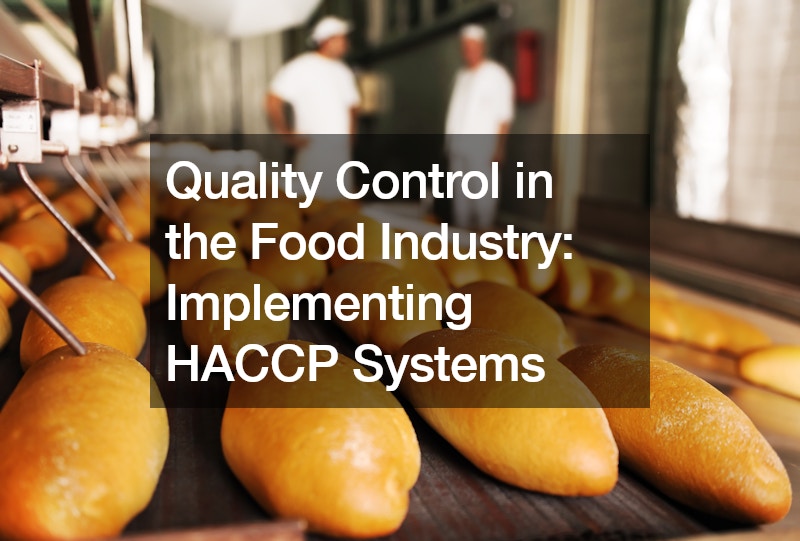In today’s food industry, ensuring the safety and quality of products is crucial. One of the most effective methods for achieving this goal is through the implementation of Hazard Analysis Critical Control Point (HACCP) systems. HACCP systems provide a systematic approach to identifying and controlling potential hazards throughout the food production process, ultimately safeguarding consumers and enhancing the reputation of food businesses.
Implementing HACCP systems can seem daunting at first, but with proper guidance and understanding, businesses can navigate the process successfully. Here’s a comprehensive guide to implementing HACCP systems, covering essential steps and considerations along the way.
1. Assemble Your HACCP Team
The first step in implementing a HACCP system is to assemble a competent and diverse team. This team should include individuals from various departments within the organization, each bringing unique skills and perspectives to the table. Key stakeholders, such as senior management, production, quality control, and sanitation personnel, should be involved to ensure a comprehensive approach.
2. Obtain Product and Processing Information
Gathering detailed information about the products and processes involved is essential for effective hazard analysis. This includes understanding ingredient specifications, processing procedures, equipment used, and potential sources of contamination. By obtaining comprehensive data, businesses can identify potential hazards more accurately and implement appropriate control measures.
3. Describe the Finished Product and Identify Its Intended Use
Understanding the characteristics of the finished product and its intended use is crucial for determining potential hazards and establishing control points. By clearly defining the product’s intended use, businesses can tailor their HACCP plan to address specific risks and ensure consumer safety.
4. Construct a Process Flow Diagram and Plant Schematic
Visualizing the flow of processes within the facility is essential for identifying potential hazards and critical control points. Constructing detailed process flow diagrams and plant schematics helps businesses map out every step of production, from raw material intake to final product distribution.
5. Check the Process Flow Diagram and Plant Schematic for Accuracy
Accuracy is key when it comes to process flow diagrams and plant schematics. Businesses must ensure that all processing steps are accurately represented and that potential hazards are adequately identified. Regular reviews and updates to these documents are essential to maintaining an effective HACCP system.
6. Identify and Assess Hazards
Once the groundwork is laid, it’s time to identify and assess potential hazards associated with the product, ingredients, and processing environment. This includes considering biological, chemical, and physical hazards that could pose a threat to consumer safety. Thorough hazard analysis is critical for developing effective control measures.
When evaluating the processing environment, it’s essential to consider factors such as equipment cleanliness and sanitation practices. For example, pipeline systems present a unique challenge as they can harbor bacteria, allergens, and other contaminants if not properly cleaned and maintained. To mitigate this risk, businesses must implement rigorous pipeline cleaning procedures as part of their sanitation practices.
7. Determine Critical Control Points (CCPs)
Critical control points are key stages in the production process in which control measures can be enforced to prevent, eliminate, or mitigate hazards to an acceptable level. Identifying CCPs requires careful consideration of factors such as risk assessment, operational procedures, and regulatory requirements. These points serve as the foundation of an effective HACCP system.
8. Establish Critical Limits for Each CCP
Once CCPs are identified, critical limits must be established to ensure that control measures are effectively implemented. Critical limits define the boundaries within which a process must operate to maintain food safety. Factors such as time, temperature, pH, and moisture levels are commonly used to establish critical limits.
9. Monitor Critical Control Points
Continuous monitoring of critical control points is essential for verifying that control measures are working effectively. Monitoring procedures should be established to ensure that CCPs are consistently maintained within critical limits. Regular monitoring helps businesses detect deviations promptly and take corrective action as needed.
10. Establish Corrective Action or Deviation Procedures
Inevitably, deviations from critical limits may occur during production. Establishing clear corrective action procedures is essential for addressing these deviations promptly and effectively. Corrective actions may include adjusting processes, reworking products, or halting production to investigate and rectify the issue.
11. Establish Verification Procedures
Verification procedures are essential for ensuring the ongoing effectiveness of the HACCP system. These procedures involve reviewing and validating the system’s performance through activities such as monitoring, testing, and auditing. Regular verification helps businesses identify any weaknesses or areas for improvement in their HACCP system.
12. Establish a Record-Keeping System
Effective record-keeping is crucial for documenting all aspects of the HACCP system, including monitoring data, deviations, corrective actions, and verification results. Detailed records provide a valuable resource for tracking the performance of the HACCP system over time and demonstrating compliance with regulatory requirements.
By following these comprehensive guidelines for implementing HACCP systems, businesses can enhance food safety, protect consumers, and build trust in their products. While the process may require dedication and resources, the long-term benefits far outweigh the initial investment. With a robust HACCP system in place, businesses can get past the challenges in the food industry with confidence.
.



